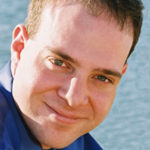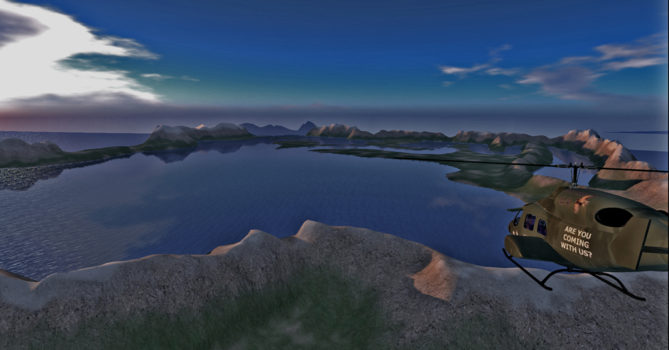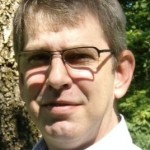Starting your own grid isn’t easy. You need your own servers, membership website, plus, of course, residents. Plus, if you want an in-world economy, you have to put payments in place. There are hosting providers, like DigiWorldz and Dreamland Metaverse, that will do all of this, but it takes quite a bit of time and effort to set it all up.
But what if you’re not quite ready?
If you think you might want to have your own grid someday, but want to start out slowly, by building the community, why not start with a “grid-within-a-grid” — or an enclave inside an existing grid.
You can create content, hold events, and attract community members while someone else takes care of all the infrastructure details.
You can start such a community anywhere, including Second Life, but some grids make it easier than others to graduate from an in-world enclave to a separate grid once you’re ready to launch.
Many communities have enclaves on Kitely, where they can get single-region islands, or islands up to 16 regions in size, or have multiple islands. Kitely calls those “worlds” but they are just the Kitely versions of variable-sized regions.

“One common motivation [for multiple islands] is to host builds which don’t fit well with each other,” Kitely CEO Ilan Tochner told Hypergrid Business. “Another reason for getting multiple worlds, which is popular with educators, is to give different groups of students separate areas in which to build their class projects so they won’t be able to spy on what the other groups are doing.”
Any grid, including Second Life, OSgrid, and Metropolis, can be used to host a cluster of regions for a particular community. Kitely allows owners to export the OAR files of those regions when they’re ready to move to other grids, as do many independent hosting providers on OSgrid and Metropolis.
Some grids also allow the export of user inventories, or allow residents to teleport out to the new grids without having to create a new avatar.
But some grid owners offer additional functionality to help support communities that might at some point want to go off on their own.
Those include custom sign-up pages for those communities, custom avatars, custom landing points, and the option to enable or disable hypergrid teleports on their regions.
DigiWorldz is a good example a grid that bends over backwards to serve in-world communities that want to have separate identities. The company runs its own social grid, but also provides hosting for other grids, making it a good option for people who want to easily go from running a community to running their own independent grid at some point.
DigiWorldz is currently hosting several “grids within a grid,” including Kea Nation, Virtual Mecca, Janas Worldz, and Pangea. There are also Carlos Loff’s Virtual Lisbon and Space Life projects, which are temporarily on hold.
Encore Escape used to be a “grid within a grid” on DigiWorldz but has since moved to having its own grid, still hosted by DigiWorldz.

With DigiWorldz, each owner of a “grid within a grid” can choose to use either Gloebits or Podex currency, choose between using Bullet or ODE physics and can choose to enable or disable hypergridding features of their regions, in addition to choosing whether or not to use custom landing points, custom starter avatars and a custom sign-up page.
Kitely also allows users to choose between using Bullet or ODE physics on a per world basis and to choose to enable or disable hypergridding features also on a per world basis. People can also set custom landing points on a per world basis.
Owners of grids within a grid at DigiWorldz also get a daily backup that is stored for 30 days and a web-based region restarter. They and their users both get support from DigiWorldz staff.
Running your own grid requires a vast amount of skills and experience, grid owner Butch Arnold, commonly known as Terry Ford told Hypergrid Business. A grid within grid is the best option for those who do not have the technical skills required to fix problems, add new features, update OpenSim codes, perform backups and offer reliable support to their customers.

“This solution allows them to leverage the ten years of OpenSim experience I have, the great performing hardware and connections we have, our automated backup systems, our control panel, and our great OpenSim support,” he said. “They can then simply concentrate on developing their community while we handle the rest.”
Dedicated servers for a “grid within a grid” start at $185 per month at DigiWorldz, making a grid within a grid less costly to run than a separate grid.
For a lower-cost starting point, an $80 package comes with ten standard regions and can be expanded or upgraded to dedicated servers later.
“This is a great way to get started developing their community and if later they need to grow, they can simply add more regions at their leisure, or they can decide to go with a dedicated server or multiple dedicated servers,” Ford said.
An owner of a “grid within a grid” also gets help with transition if he or she decides to move to their own separate grids. He or she can continue using DigiWorldz OpenSim code and get support from the grid.
“If the user later decides to upgrade to their own grid, the transfer of content is done using OAR and IAR files, but each of these types of files are filtered, meaning they will only include items which the users have full perm, or have been created by them,” he said. “Or, the users can simply transfer items between their old avatar and their new avatar as many have done.”
Kea Nation is a grid within a grid at DigiWorldz and runs a total area of 1,072 standard regions. It started as a grid in AviWorlds, then was hosted by Genesis Metaverse, and last year joined DigiWorldz. It became a grid within a grid on January this year, starting with 20 four-by-four variable-sized regions.
Kea Nation opted for a grid within a grid because of the less hassles and cost involved, grid owner Don Hayward told Hypergrid Business.

“Many would-be grid owners don’t really want the hassles of running a grid, but they are very interested in building a community for new and old friends and this option makes it very easy for them to do just that without the hassles and the cost associated with trying to do it all themselves,” he said. “Leveraging the features, platform, performance and tech support of DigiWorldz makes perfect sense.”
Kea Nation owner and users get backups and all the technical support from an experienced DigiWorldz team and 90 percent of the headaches of running a grid are taken care of by the host grid, Hayward said.
The grid now has a custom sign up page that lands users to Kea Nation upon first login, uses Bullet physics, and the currency is DigiWorldz dollars which is bought through Podex. They also rent land for US$30 per month, and the money goes directly to Kea Nation, which can then use the money to cover hosting costs, buy content, pay salaries, or any other purpose.
“Because we are a ‘grid within a grid’ and a few great people followed us to DigiWorldz we had users from day one,” said Hayward.
Users also get access to shopping and can attend regular events at DigiWorldz, said Ford.
However, there is a bad side of running a grid within a grid compared to an independent grid. You get limited control and your stats cannot be listed separately, said Hayward.
“The only disadvantage I can see with being a grid within a grid is our stats are not listed separately,” said Hayward. “But really — is that a disadvantage?”
Do you know of other grids that offer “grid-within-a-grid” services similar to DigiWorldz? Let us know in the comments!
- OpenSim active users hit all-time-high for the holidays - December 15, 2023
- OpenSim user activity ramping up for the holidays - November 15, 2023
- OpenSim land area at a new high as grids prep for holidays - October 15, 2023
